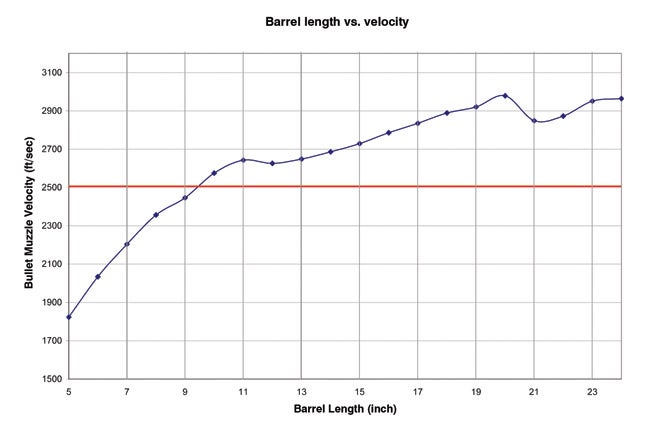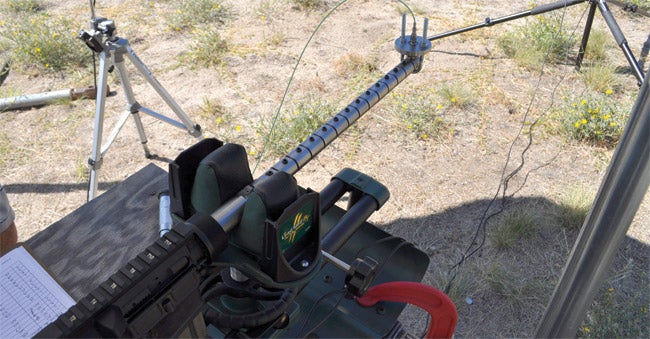I have never been one to subscribe too much to the barrel length debate. I do know that through my shooting I generally keep my .308 equipped with a 20in barrel and my .223/556 barrels vary from 14.5in to 20in, depending on the application. While I understand that there is velocity loss though less gas expansion, I tend to look more at the repeatably of the shot. Is the barrel consistent enough to accurately put rounds down range as close together as possible?

The maximum velocity for the M855 projectile occurred in a 20-inch barrel. This is anticipated since the cartridge was designed specifically for this barrel length. Velocity drops rapidly as the barrel length decreases, especially below 10 inches where the velocity drops below 2,500 fps. M855 bullets traveling below 2,500 fps when impacting a target will not produce a lethal wound channel.
You can change or even eliminate muzzle flash, muzzle blast and other things with cartridge building, muzzle devices and suppressors. With accuracy you are limited to the barrel harmonics and loading rounds that will induce consistent harmonics and barrel whip.
This article takes a look at different 5.56 cartridges and how barrel length can change velocity, accuracy and lethality while also decreasing weapon function.
There has been a cultural shift from the 20-inch barrel length in the AR-15/M16 weapon systems chambered for the 5.56×45 NATO cartridge to progressively shorter barrels for the purpose of producing an increasingly more compact assault/entry weapon without resorting to a bull-pup design. Simple usage of these short-barreled weapons has shown the necessity for both sound and flash suppression, the intensity of which (in exceptionally short barrel lengths) approached the intensity of a flash-bang diversion device. This shift toward shorter barrels has resulted in the U.S. Army and Marine Corps adopting the 14.5-inch barreled M4 carbine with a re-design of the 5.56×45 from the 55 grain SS-109 to the 63 grain M855 ammunition to optimize this barrel length. The differing bullet design also necessitated a change in the rifling twist rate from the original 1:12 inches to 1:7 inches.
For the entire article check out the link here: http://www.sadefensejournal.com/wp/?p=1093
 Your Privacy Choices
Your Privacy Choices
